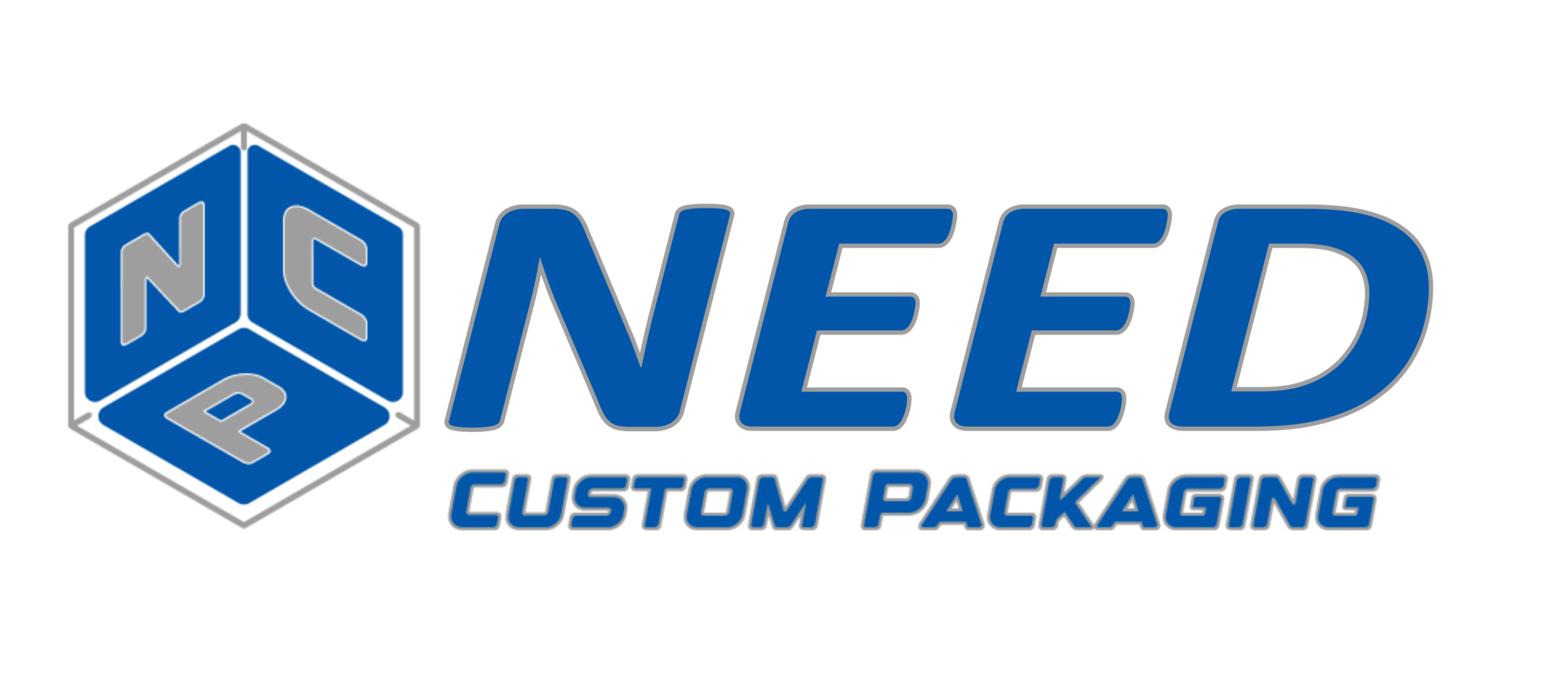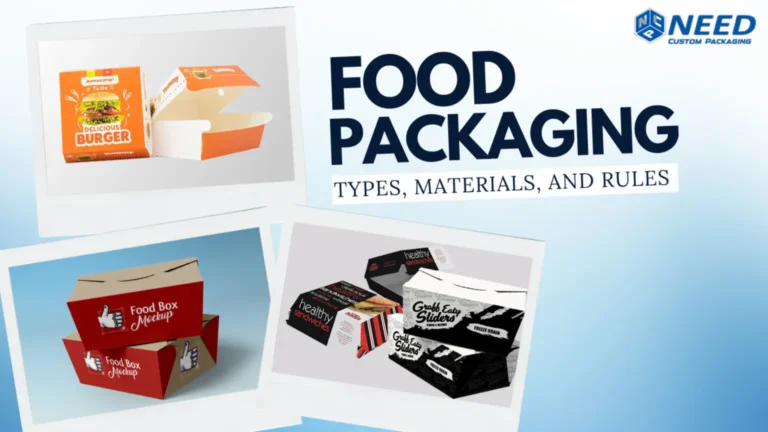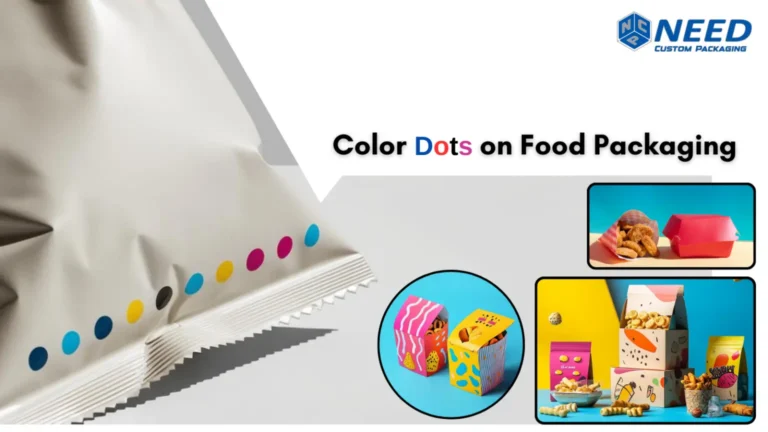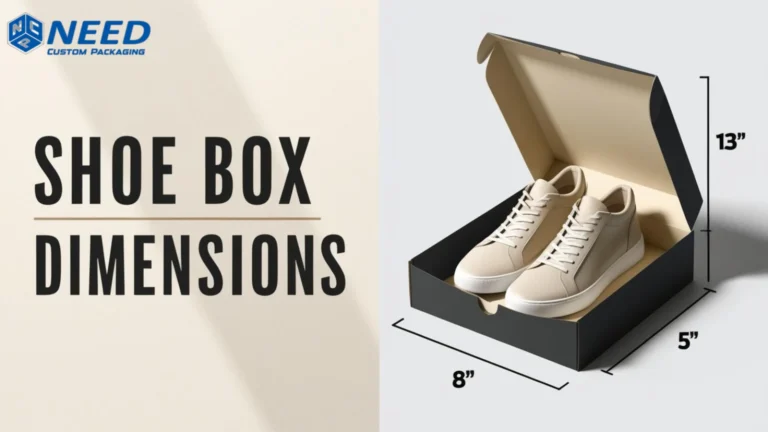Have you ever wondered why your chips come in sealed bags or your juice in cartons? That’s because of food packaging — it keeps food safe, fresh, and easy to carry.
Since I began working in the packaging industry in 2000, I’ve witnessed the evolution of food packaging over time. It’s not just about wrapping food anymore. It protects the food, tells you what’s inside, and even helps it look good on store shelves.
A common question people ask is:
Which container protects and advertises the food for sale and storage?
The answer is food packaging containers — like boxes, jars, pouches, and cans. These containers protect the food and show the product name, brand, and ingredients.
In this blog, I’ll explain everything you need to know about food packaging — from what it is to its types, materials, and the rules companies must follow.
Let’s begin.
What is Food Packaging?
Food packaging is any container or wrapping used to hold, protect, and present food.
It’s the box that holds your pizza, the plastic bottle for your soda, and even the bag your cookies come in.
Since 2000, working in the packaging industry, I’ve learned one thing very clearly: Good packaging isn’t just about looks — it’s about safety first.
Primary Purposes of Food Packaging:
-
Protection: Keeps food safe from dirt, germs, damage, or getting spoiled.
-
Preservation: Helps food last longer — like vacuum-sealed meat or airtight jars.
-
Information: Shows details like ingredients, expiry date, and allergy warnings.
-
Marketing: Makes the product look attractive and builds brand trust.
-
Convenience: Easy to carry, open, and store at home.
3 Main Types of Packaging (Based on Use):
| Type | Description | Example |
|---|---|---|
| Primary | Touches the food directly | Yogurt cup, chips bag |
| Secondary | Groups the primary packaging together | Cereal box, soda 6-pack holder |
| Tertiary | Used for shipping large amounts | Pallets, big cardboard cartons |
Major Types of Food Packaging
Food comes in many shapes and sizes — and so does its packaging. Choosing the right type depends on the food, how long it needs to last, and how it will be sold or shipped.
Let’s break it down in a simple way.
Types Based on Packaging Level
Primary Packaging
-
This is the first layer that touches the food.
-
It keeps the food safe and fresh.
-
Example: A candy wrapper, a ketchup bottle, or a milk carton.
Secondary Packaging
-
This holds one or more primary packages together.
-
It’s useful for stacking and selling in bulk.
-
Example: Custom Food boxes that hold a plastic bag inside.
Tertiary Packaging
-
This is used for shipping and handling large quantities.
-
It protects items during transport.
-
Example: Large boxes on a pallet wrapped in plastic.
Types Based on Structure or Use
Here are some common food packaging types you see every day:
| Type of Packaging | Description | Example |
|---|---|---|
| Flexible Packaging | Bends easily, lightweight | Chip bags, pouches |
| Rigid Packaging | Strong and holds shape | Glass jars, plastic bottles |
| Aseptic Packaging | Keeps food safe without refrigeration | Juice boxes, milk cartons |
| Vacuum Packaging | Removes air to keep food fresh | Vacuum-packed meats |
| Modified Atmosphere | Changes the air inside to extend shelf life | Packaged salads, meat trays |
| Edible Packaging | Can be eaten along with the food | Some rice paper wraps |
My Suggestion as a Packaging Expert:
If your food product needs to stay fresh longer without freezing, consider vacuum or MAP (Modified Atmosphere Packaging). It works great for meats, salads, and bakery items.
Food Packaging Materials: Strengths & Uses
Every food product requires the right material to remain fresh, safe, and visually appealing. Over the years, I’ve seen how the wrong material can ruin food — leaking, tearing, or even causing contamination. That’s why it’s so important to choose wisely.
Let me explain the most common packaging materials in simple terms.
Common Types of Food Packaging Materials:
| Material | Strengths | Used For |
|---|---|---|
| Plastic | Light, strong, waterproof | Bottles, trays, wrappers |
| Paper/Cardboard | Eco-friendly, easy to print on | Cereal boxes, sandwich wraps |
| Glass | Keeps flavors fresh, reusable | Jars for sauces, juices |
| Metal (Aluminum, Tin) | Blocks light and air, long shelf life | Soda cans, canned foods |
| Biodegradable/Compostable | Breaks down naturally | Eco food trays, paper straws |
A Quick Look at Plastics (Types You’ll See on Packages):
| Plastic Code | Name | Common Use |
|---|---|---|
| 1 | PET | Water bottles, salad boxes |
| 2 | HDPE | Milk jugs, juice containers |
| 4 | LDPE | Bread bags, squeezable bottles |
| 5 | PP | Yogurt cups, takeout containers |
My Suggestion:If you’re starting a food business and want eco-friendly options, look into kraft paper boxes or biodegradable trays made from sugarcane or cornstarch. These are strong, safe, and better for the planet.
Also, always make sure the materials are food-grade — meaning they’re safe to touch food without causing harm.
Food Packaging Requirements
When packaging food, it’s not just about wrapping it up — there are certain rules and safety standards that must be followed. These are called food packaging requirements.
Since 2000, I’ve seen many businesses struggle just because they didn’t follow the basics. So here’s a simple guide to help you understand what’s required.
What Are the Basic Requirements of Food Packaging?
To meet food safety standards, packaging must:
-
Be Safe for Food Contact
-
The material should be non-toxic and approved for direct contact with food.
-
-
Protect the Food
-
It should keep out dust, germs, light, moisture, and oxygen — things that spoil food.
-
-
Be Strong and Durable
-
It shouldn’t tear, leak, or break during transport or storage.
-
-
Match the Food Type
-
Oily foods need grease-resistant paper. Liquid items need leak-proof containers.
-
-
Be Tamper-Proof
-
The packaging should show if it’s been opened or damaged.
-
-
Be Easy to Label
-
There should be space to print details like ingredients and expiry dates.
-
Food Packaging Regulations: What You Must Follow
Food box packaging isn’t just about looking nice — it’s about following the law. Every country has rules that make sure food is safe to eat and labeled correctly. If you don’t follow these rules, you could face fines, recalls, or worse — lose customer trust.
With over 20 years in the packaging business, I always tell clients:
“Design is important, but compliance comes first.”
What Are the Laws and Regulations on Food Packaging?
Different regions have their own rules. Here are the major ones:
| Region | Authority | What They Do |
|---|---|---|
| USA | FDA (Food and Drug Administration) | Approves food-safe materials and labeling |
| Canada | CFIA (Canadian Food Inspection Agency) | Sets rules for food packaging and labeling |
| Europe | EFSA (European Food Safety Authority) | Controls packaging safety and additives |
| Global | Codex Alimentarius | Offers international food packaging guidelines |
No matter where you are, the goal is the same: make sure packaging is safe, clean, and honest.
What Is the Code on Food Packaging?
You might have seen symbols and numbers on the bottom of bottles or boxes. These are packaging codes. They help factories and recycling plants know:
-
What material was used
-
If it’s food-grade
-
Whether it’s recyclable
Examples:
-
Plastic recycling codes (1–7) in triangles
-
Glass or metal food-safe symbols
-
Lot/batch numbers for tracking
You can also read a blog that is about color dots on food packaging and their purpose.
Conclusion
Food packaging is more than just wrapping — it plays a vital role in keeping food safe, fresh, and market-ready. From selecting the right materials to understanding legal requirements, every detail matters. Whether you’re starting a food brand or improving your packaging strategy, choosing the right type and structure can protect your product and build customer trust.
If you need expert help choosing food-safe and customized packaging solutions, please don’t hesitate to contact us at Need Custom Packaging.
FAQS
What is the main purpose of food packaging?
Food packaging serves multiple purposes: it protects food from contamination, extends shelf life, provides important product information, and makes transportation and storage easier.
What are the 3 main levels of food packaging?
The three main levels of food packaging are primary (in direct contact with food), secondary (groups primary packages), and tertiary (used for bulk shipping and distribution).
Which packaging material is safest for food?
Glass and food-grade plastics like PET and HDPE are considered safe for food. Biodegradable materials like kraft paper and sugarcane trays are also safe when certified as food-grade.
What is the difference between flexible and rigid packaging?
Flexible packaging is lightweight and bendable, like pouches and bags. Rigid packaging retains its shape and includes items like glass jars, cans, and plastic bottles.
How can I know if a package is food-safe?
Look for food-grade symbols, recycling codes (like #1 PET or #2 HDPE), or certification labels approved by agencies like the FDA, CFIA, or EFSA.
What is Modified Atmosphere Packaging (MAP)?
Modified Atmosphere Packaging changes the air inside the package to extend shelf life, commonly used for meats, salads, and bakery products to stay fresh without freezing.
Why is food packaging important in marketing?
Food packaging builds brand identity, attracts buyers through design, and provides essential information like ingredients, nutrition facts, and expiration dates — all key for consumer trust.
What are some eco-friendly food packaging options?
Eco-friendly options include kraft paper boxes, compostable trays made from sugarcane or cornstarch, and biodegradable wrappers — ideal for reducing environmental impact.
Are there legal requirements for food packaging?
Yes. In most countries, food packaging must meet safety, labeling, and traceability standards set by authorities like the FDA (USA), CFIA (Canada), or EFSA (Europe).
Can packaging affect food quality?
Absolutely. Poor packaging can lead to contamination, spoilage, and flavor loss. High-quality, food-safe materials maintain freshness, taste, and safety throughout the supply chain.
What symbols should I look for on food packaging?
Common packaging symbols include recycling codes (1–7), “food-safe” logos, expiry or batch codes, and tamper-evident indicators to ensure product integrity.








